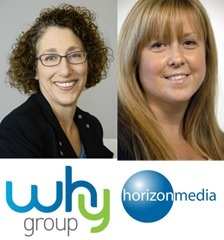One of the notable things to come out of the results from our Techsurveys is how much emotion plays a role in broadcast radio listening. While consumers enjoy hearing their favorite songs, personalities, and information, mood plays a role why they continue to come back to AM/FM radio stations. In our research, it is often in the form of companionship, mood elevation, and escape. All of this revolves around a better understanding of the consumer’s mindset – or mood.
Others are noticing this, too. And they are quantifying the role that mood plays in the listening experience. We recently wrote about Paul Lamere of Echo Nest, who gave a presentation at SXSW where he pointed out that 17 of the top 100 playlist names on Spotify are genre-related, while 41 are context-based or mood-driven, with names like Chill, Party, Workout, or Roadtrip.
This suggests that many of the daypart rules and restrictions that programmers have adhered to for years are questionable. Or that there’s more to it than “hardening up” at night or “playing it safe” during the workday.

Interestingly, mood and radio listening may also begin to impact how advertising dollars are placed. Horizon Media, one of the largest privately held media services agencies in the world, recently announced the results of a comprehensive study that indicates audio advertising can be more effective if it is aligned with listeners based on their emotion and moods.
Horizon’s research initiative had several phases, starting with interviewing an eclectic mix of leaders in the audio entertainment field, including Professor Simon Frith (University of Edinburgh), Paula Woodley (USC), Bob Pittman, Ryan Seacrest, Kathleen Bohan (Univision), and Tim Westergren (Pandora). There was also a 2,000 person study and additional one-on-one interviews that included heavy audio users.
But this isn’t just about sales and advertising. Identifying “moodstates” is revolutionary way of thinking about programming, targeting, and truly connecting with consumers at the most visceral of levels. The team at Horizon Media believes the results of the study indicate that going beyond dayparting and demographics to tap into the listener’s mood may be a way to make audio advertising more effective.
For this week’s edition of “Radio’s Most Innovative,” we asked Sheri Roder, Chief of The WHY Group at Horizon Media, and Lauren Russo, SVP, Managing Director of Audio & Promotions at Horizon Media, to elaborate on this study and what it could mean to the future of radio advertising (and programming).
JM: What was the impetus for this study? How did the idea come about?
SR: Because audio is, at root, a sensory experience, we always knew that it has a stronger emotional connection with listeners. But the business doesn’t approach it that way—it still operates on a very rational/demographic approach. We knew there must be a better and deeper way to connect the actual experience to how we plan and buy audio. In addition, the audio landscape continues to evolve — and we wanted to gain a better understanding of how and why people are consuming audio content differently.
JM: This project had a number of different stakeholders. How were you able to bring together a diverse group?
HM: From an industry perspective, we felt it was important to cover all segments and engage those who take the leadership position in their respective spaces. We wanted feedback from leaders in the terrestrial, digital, Hispanic, and academia spaces to get a holistic view from many experts.
JM: How did input from people with interests in the industry affect the study results?
LR: Their input didn’t affect the final conclusions, but it helped us identify some areas of development as it pertains to technology advancements in the audio space.
JM: Is the effect of mood on consumers something you’ve already been using to help place advertising in other media or is this study something completely new?
LR: This is a new tactic we are exploring and activating in the audio space, but we feel there is opportunity to roll out in other media channels.
JM: Can you tell us about how the research study was conducted?
SR: There were multiple phases—academic and expert interviews, week-long diaries with consumers, one-on-one “audio super user” interviews, and a large scale quantitative study among 2,000 people. The research was conducted by Sparkler, a brand strategy consultancy based in London, in collaboration with iHeartMedia.
JM: What were some of the notable insights the study yielded?
SR: The major insight is that mood drives behavior, platform, and genre choice. It supersedes everything else, including age, income, daypart, life attitudes, etc.
JM: How does targeting audio advertising by mood and emotion make it more effective?
SR: Aligning with the right mood at the right time in the right space will drive deeper, more effective engagement with a brand’s message. We’ve created “moodstates” — this was proven to be the most discriminating way when thinking about how to make the audio space as powerful as possible for brands. A second phase of research will be to match desired or actual brand moods with our “moodstates” to ensure the best match possible.
JM: Are the “moodstates” of listeners consistent by time of day or do they vary by gender, age, and other factors?
LR: Within any “moodstate” is a range of dayparts, gender, age, and platforms. The deeper you drill down into any one mood zone, the more specific you can get. If you think of this from a personal point of view, you probably have a range of moods during the day and you are employing various platforms, genres, and experiences to either enhance or change your mood. Our role is to find the most likely zone or zones that make the most sense given a brand’s objectives.
JM: Can you explain how you will match that information with listening patterns to more effectively purchase advertising for your clients?
LR: Instead of determining audio purchases based strictly on scale and demographics, the focus and priority will be on mood.
JM: What were the biggest hurdles you’ve had to overcome in this process? How will you overcome the obstacles?
LR: Applying the information to actual purchases has been the biggest challenge thus far, but our plan is to fuse Nielsen respondent-level data with our mood zones, in effect, creating a new way to consider ratings—mood-based vs. demo based.
JM: What would you say to radio programmers who have traditionally scheduled music mostly by category, era, and tempo?
LR: The landscape continues to evolve, listening patterns are changing and we need to embrace and look at things with a fresh perspective. There may be a whitespace that has yet to be explored or ways in which to market their existing line-up to new advertisers.
JM: How can a local program director apply some of your learnings to what they do every day?
LR: Think about different ways to engage consumers that align with current programming in a more creative and strategic way. Think contextual song tagging, alignment with artists, songs, and brands.
Thanks to Mike Stern for putting together this week’s post.
INNOVATION QUOTE OF THE WEEK
“I believe in innovation and that the way you get innovation is you fund research and you learn the basic facts.”
Bill Gates
More of Radio’s Most Innovative
- Radio’s Most Innovative: GeoTraffic
- Radio’s Most Innovative: KSHE’s Real Rock Museum
- Radio’s Most Innovative: WNIC’s “Pillow Talk” with Alan Almond
- Radio’s Most Innovative: Jim Fox and KKDO’s “Like/Dislike”
- Radio’s Most Innovative: KISW’s Live Day
- Media And Technology In 2025: Believe It Or Not! - April 18, 2025
- In Radio, You Just Never Know - April 17, 2025
- The Secret To Making A Great Podcast (And Great Radio) - April 16, 2025






Man, I learn so much on these Friday “most innovative” posts. Really good stuff! Keep em coming and thanks to you and Mike!
Thanks, Dave – that means a lot. All of us put a lot into this, and we hope that over time, these stories about innovation in radio generate more of it. It’s exactly what our business needs to continue to do.
Thanks, Dick.